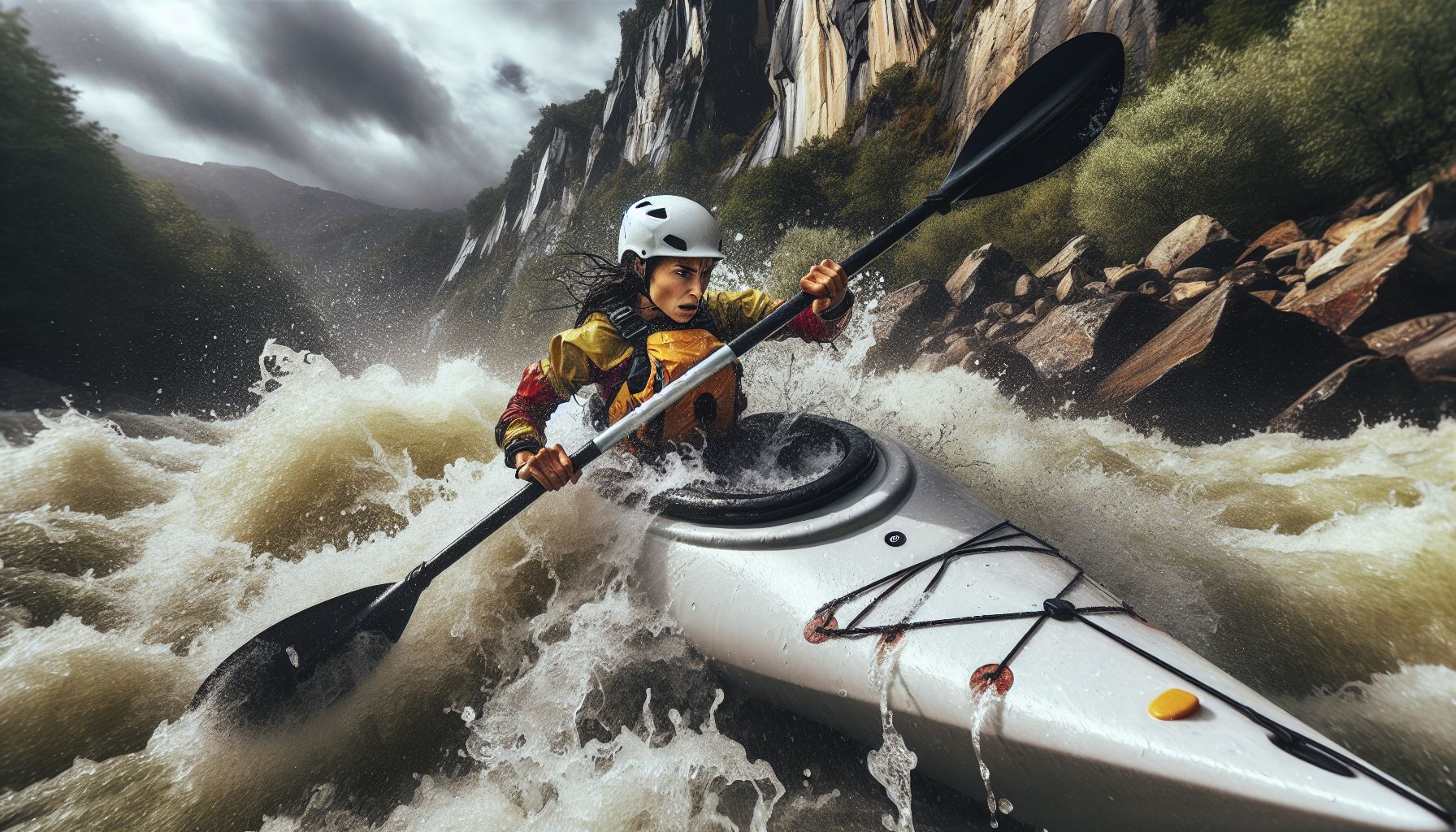Whitewater kayaking is an adrenaline-fueled adventure sport that combines the rush of battling rapids with the serenity of being surrounded by nature. A unique mix of skill, endurance, and bravery is necessary to navigate through the turbulent waters, which offer kayakers an experience that is both exhilarating and demanding. In this comprehensive guide, we’ll take an in-depth look at what whitewater kayaking involves, the essential equipment, skills required, safety measures, and the best destinations to pursue this invigorating activity.
Understanding Whitewater Kayaking
Whitewater kayaking is navigating through river rapids using a small, agile boat known as a kayak. Rapids are categorized based on their difficulty, which ranges from simple, straightforward passages to complex, dangerous routes that can challenge even the most experienced kayakers.
Categories of Rapids:
- Class I: Easy – Slow-moving water with a few small waves.
- Class II: Novice – Straightforward rapids with clear, wide channels.
- Class III: Intermediate – Rapids with moderate waves, potential for small drops, and some maneuvering required.
- Class IV: Advanced – Intense, powerful rapids requiring precise boat handling and scouting ahead.
- Class V: Expert – Extremely difficult rapids with long, obstructed, or violent routes. For teams of experts only.
- Class VI: Extreme and Exploratory – Unpredictable and often considered unrunnable. Attempted rarely and only by the best of the best.
Essential Equipment for Whitewater Kayaking
To get started with whitewater kayaking, you will need some essential pieces of equipment designed to protect you and enhance your experience on the water.
Kayak:
Your choice of kayak should be based upon the type of rapids you plan to encounter. There are river runners, playboats, creek boats, and crossover kayaks, each suited for varying aspects of the sport.
Paddle:
A sturdy paddle is a kayaker’s primary tool for navigating rapids. Paddles for whitewater are usually shorter and more robust than those used for calm-water kayaking to offer better control.
Personal Flotation Device (PFD):
A good quality, well-fitting PFD is a non-negotiable safety gear. It keeps you buoyant and protects your upper body upon impact.
Helmet:
Given the risks of hitting rocks and other objects, a durable helmet designed for watersports is crucial for head protection.
Spray Skirt:
A spray skirt keeps water out of the kayak’s cockpit. It’s an essential piece of equipment for maintaining the kayak’s buoyancy in rough water.
Other Accessories:
Wet or dry suits for body protection, specially designed footwear, gloves, and safety ropes are other items that can enhance safety and comfort in the water.
Skills Required for Whitewater Kayaking
While whitewater kayaking can be incredibly fun, it requires a set of skills to safely and effectively navigate the rapids.
Paddling Techniques:
Basic paddling strokes like the forward stroke, sweep stroke, reverse stroke, and draw stroke are crucial. Kayakers must also master the brace, which helps stabilize the kayak when encountering waves or obstacles.
Eskimo Roll:
The Eskimo roll is a technique used to right oneself after capsizing without exiting the kayak – essential in avoiding dangerous situations.
River Reading:
Understanding how to read a river – identifying eddies, waves, holes, and understanding the flow of the water is vital for navigating rapids safely.
Safety and Rescue:
Knowledge of self-rescue techniques and being able to help others in the group are important aspects of whitewater kayaking.
Safety Measures in Whitewater Kayaking
Safety in whitewater kayaking cannot be overemphasized. It’s critical to always go kayaking with others and ensure that everyone in the group has the necessary skills and equipment.
Training and Preparation:
Before tackling the rapids, it’s important to receive proper training, either through a certified kayak school or an experienced instructor.
Scouting Rapids:
Scouting ahead when approaching unfamiliar rapids helps to plan the best route and prepare for any hazards.
Communication:
Effective communication among group members is essential, especially in noisy and chaotic rapid sections.
Remain Calm:
Staying calm under pressure is essential for making sound decisions and maintaining control in all situations.
The Best Destinations for Whitewater Kayaking
North America:
- The Colorado River, USA – Home to the famous Grand Canyon rapids.
- Ottawa River, Canada – Offers a diverse range of rapids.
South America:
- The Futaleufú River, Chile – Known for its turquoise waters and powerful rapids.
Europe:
- The Sjoa River, Norway – Popular for its stunning scenery and thrilling rapids.
Asia:
- The Sun Kosi River, Nepal – Takes kayakers through the heart of the Himalayas.
Oceania:
- Franklin River, Tasmania, Australia – Features wild, untouched wilderness.
Conclusion
Whitewater kayaking is indeed a sport that can make your heart race and your adrenaline pump. With the right equipment, skills, and safety measures in place, it is an activity that can be enjoyed by enthusiasts of all levels. It connects you with nature’s raw power and offers an unparalleled sense of freedom and adventure. As you prepare for your next or perhaps your first whitewater kayaking adventure, remember the powerful words of the famous kayaker, Doug Ammons, “Be careful in your choices because they lay out the path you will follow.”
References
- “American Whitewater – Rapid Classification.” American Whitewater, https://www.americanwhitewater.org/content/Wiki/safety:start.
- “How to Choose a Whitewater Kayak.” REI Expert Advice, https://www.rei.com/learn/expert-advice/whitewater-kayak.html.
- Nealy, William. “Kayak: The Animated Manual of Intermediate and Advanced Whitewater Technique.” Menasha Ridge Press, 1986.
